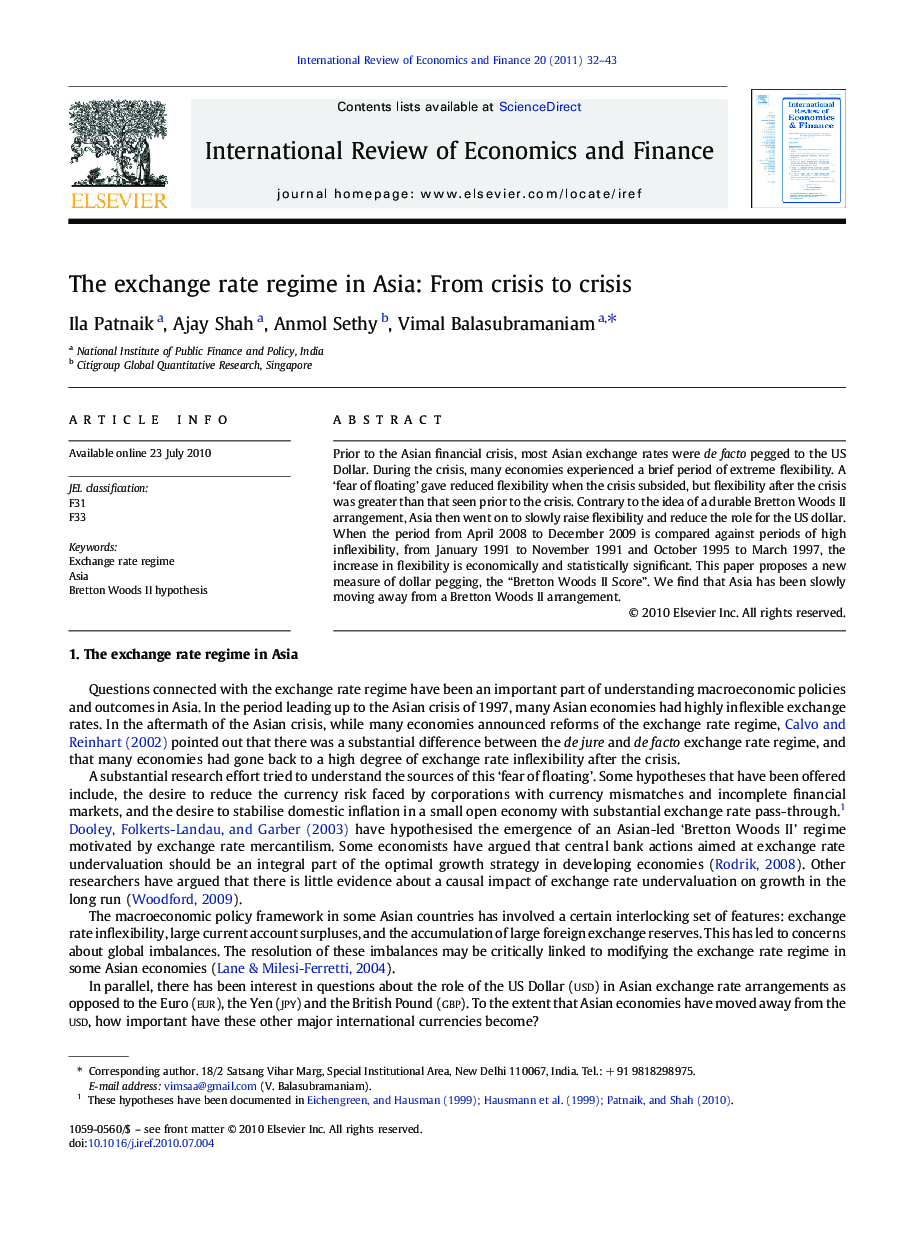| Article ID | Journal | Published Year | Pages | File Type |
|---|---|---|---|---|
| 5083973 | International Review of Economics & Finance | 2011 | 12 Pages |
Abstract
Prior to the Asian financial crisis, most Asian exchange rates were de facto pegged to the US Dollar. During the crisis, many economies experienced a brief period of extreme flexibility. A 'fear of floating' gave reduced flexibility when the crisis subsided, but flexibility after the crisis was greater than that seen prior to the crisis. Contrary to the idea of a durable Bretton Woods II arrangement, Asia then went on to slowly raise flexibility and reduce the role for the US dollar. When the period from April 2008 to December 2009 is compared against periods of high inflexibility, from January 1991 to November 1991 and October 1995 to March 1997, the increase in flexibility is economically and statistically significant. This paper proposes a new measure of dollar pegging, the “Bretton Woods II Score”. We find that Asia has been slowly moving away from a Bretton Woods II arrangement.
Keywords
Related Topics
Social Sciences and Humanities
Economics, Econometrics and Finance
Economics and Econometrics
Authors
Ila Patnaik, Ajay Shah, Anmol Sethy, Vimal Balasubramaniam,
